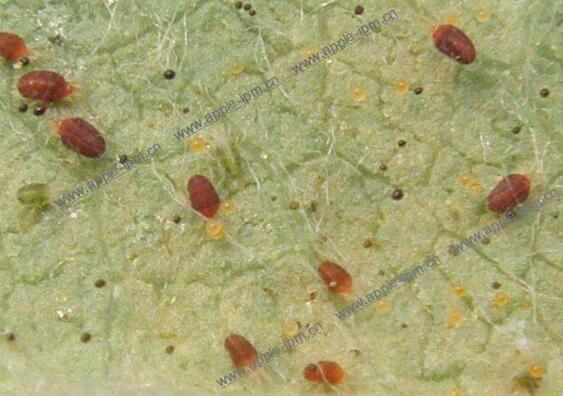What should we do if the late fragrant jade grows insects? disease and pest control of late fragrant jade / 4 insects and 2 diseases are sprayed with medicine
Evening fragrant jade, as the name of the flower, it blossoms at night, the flower is full of fragrance, is a very beautiful flower, raised by many flower friends at home. However, in the process of breeding, due to various reasons, the evening fragrant jade will inevitably be attacked by diseases and insect pests, so what about the night fragrant jade worms? The following are six kinds of disease and pest control of Evening fragrant jade, follow the editor to have a look.
First, the evening fragrant jade long worm, spray with medicine

As a beautiful flower, Evening fragrant jade is potted at home by many people, but because most of them are novice, they do not follow the breeding method of evening fragrant jade, as a result, diseases and insects appear. As for what to do with the late fragrant jade worms, we first identify the insect pests, and then solve the problem. In this regard, the editor summarized six kinds of diseases and insect pests of late fragrant jade, and attached the prevention and control methods, we went on to look at it.
Second, the prevention and control of diseases and insect pests of Evening Xiangyu
1. Aphids
The insect is small, about 1 mm, dark green and winged, mainly attached to the leaves, stems and top buds of evening jade, sucking their sap, resulting in poor plant growth.
Control methods: when there are few aphids, they can be removed by rinsing with plant ash on the leaf surface; when there are many aphids, 150 times of omethoate can be sprayed to control them.
2. Scale insects
Scale beetle is the most common pest on evening jade. It is small, often gathers together and secretes wax, which looks like a pile of white wax powder. The insect often gathers in branches and leaves and absorbs plant sap for a living. Symptoms of damage: the leaves of late fragrant jade turn yellow, and in serious cases, it will cause the branches to wither or the whole plant to die.
Control methods: when there are few scale insects, just pick them off with a stick and crush them to death. When there are many diseases and insect pests, spray dichlorvos 1000-15000 times, or 50% marathon emulsion 1000 times for prevention and control.
3. Red spider
Mites are arachnid pests, which are one of the most important pests of late fragrant jade. The insect often occurs when there is poor ventilation and harms the top of the plant. Symptoms of damage: the top of the evening fragrant jade is reddish brown and has cobwebs, which affects the growth and development of the plant.
Prevention and control methods: after discovering diseases and insects, you can use enemy killing to deal with them, and you can also spray anti-mite 25% EC 800x solution, 73% acarate 2000 times liquid and other drugs.
4. Whitefly
Whitefly can not be ignored in the pests of late fragrant jade, it is a kind of small phytophagous piercing insects, which is mainly caused by nymphs and adults to suck the sap of host plants, resulting in plant weakness.
Control methods: when whitefly is found, it can be sprayed with 800 times of anti-mite 23 EC and 73% 2000 times of mites.
5. Fusarium wilt
In addition to insect pests, diseases also need attention in the growth process of evening jade, such as Fusarium wilt, a plant disease caused by fungi or bacteria. Once the evening fragrant jade suffers from Fusarium wilt, there will be several diseases: severe spots, wilting or the death of leaves, flowers, fruits, stems or whole plants.
Prevention and treatment methods: after discovering the above symptoms, you can spray wilt Rick 600 times 800 times liquid, 50% carbendazim 600 times liquid, and so on. And the diseased branches were cleared and burned in time to reduce the source of the disease.
6. Ring disease
In addition to Fusarium wilt, ring disease is also one of the diseases and insect pests of late fragrant jade, and it is a disease spot in the process of development. Symptoms: the veins of the late fragrant jade leaves are reddish brown, surrounded by dark green to yellowish green, and brown or dark brown inside. The disease spot of the lobule is less, and soon it is in the shape of a wheel, forming many small black spots.
Prevention and treatment methods: after the above diseases are found, 50% methyl topiramate wettable powder 500 times solution can be used for alcohol control, which can be effective in a few weeks.
Generally speaking, evening fragrant jade is not difficult to raise, but the difficulty lies in the wrong method, as a result, worms will naturally get sick. Of course, if the late fragrant jade worms get sick, don't be afraid, just follow the above methods to prevent and cure them. With regard to the prevention and control of diseases and insect pests in the evening fragrant jade, the editor has introduced it here, hoping to bring help to everyone. Finally, I hope everyone's evening jade can produce beautiful flowers.
Prevention and control of diseases and insect pests of late fragrant jade
Control methods of common diseases and insect pests in late Xiangyu 1. Root nodule nematode larvae invade the roots, often making plants stunted, dwarfed and yellowed. Control method: when it occurs, 1500 times of omethoate emulsion can be used to irrigate the soil, or 3% carbofuran can be buried in the basin soil for control. 2. Powdery mildew is mainly harmful to leaves. Prevention and treatment: 1000 times of Yifaling wettable solvent can be sprayed when it occurs.
Prevention and control of common diseases and insect pests in late fragrant jade
Control methods of common diseases and insect pests in late fragrant jade
1. The root nodule nematode larvae invade the roots, often making the plants stunted, dwarfed and yellowed.
Control method: when it occurs, 1500 times of omethoate emulsion can be used to irrigate the soil, and 3% carbofuran can be buried in the basin soil for prevention and control.
2. Powdery mildew is mainly harmful to leaves.
Prevention and treatment: 1000 times of Yifaling wettable solvent can be sprayed when it occurs. Other control methods refer to Dahlia. The relevant part of melon leaf chrysanthemum.
- Prev

Taxus disease and pest control, 3 major insect pests / 3 major diseases / prevention and treatment need to be combined
Taxus can survive on the earth for more than 2.5 million years, which shows that its disease resistance is relatively strong, but with the development of pot technology, when many people raise it at home, it may cause diseases and insect pests on the plant because they do not understand the culture methods of the yew or do not have good maintenance and management.
- Next

In the prevention and control of diseases and insect pests of sorrel, 5 major pest control skills / prevention is the key
Sorrel is a relatively easy plant to raise, but if it is often placed in a more extreme environment, or if the culture method of sorrel is not very scientific, it will lead to pests such as sorrel rock mites, peach aphids and so on. Flower friends should know some pest control methods of sorrel.
Related
- Fuxing push coffee new agricultural production and marketing class: lack of small-scale processing plants
- Jujube rice field leisure farm deep ploughing Yilan for five years to create a space for organic food and play
- Nongyu Farm-A trial of organic papaya for brave women with advanced technology
- Four points for attention in the prevention and control of diseases and insect pests of edible fungi
- How to add nutrient solution to Edible Fungi
- Is there any good way to control edible fungus mites?
- Open Inoculation Technology of Edible Fungi
- Is there any clever way to use fertilizer for edible fungus in winter?
- What agents are used to kill the pathogens of edible fungi in the mushroom shed?
- Rapid drying of Edible Fungi

